Watercolor Custom House Portraits depicting 20 Los Angeles neighborhoods
I spent many years in Los Angeles, America’s fourth largest city, living in a variety of neighborhoods and always enjoying the eclectic architecture and diverse nature of the city. And I found there was certainly no shortage of amazing house portrait subjects in Los Angeles city — in every architectural style imaginable. The increasing congestion of the metropolis finally became unlivable for us and we left the City of Angels, however I took with me a treasure trove of happy memories.
Going back decades, Los Angeles has always been a patchwork of neighborhood enclaves separated by highways, thoroughfares and plenty of hills. There are so many fascinating neighborhoods in L.A. proper that I am concentrating on a favorite that represents many of the great things about the city. Although the urban landscape has changed immensely over the years, boutique stores, cafes and eateries are still a mainstay in the walkable and diverse neighborhoods. A classic example of this is this watercolor urban scene that I painted from a vintage photo. A client commissioned me to create this pen and watercolor portrait as her family formally owned the popular Brown’s Bakery, once located on Wilshire Boulevard in Los Angeles.
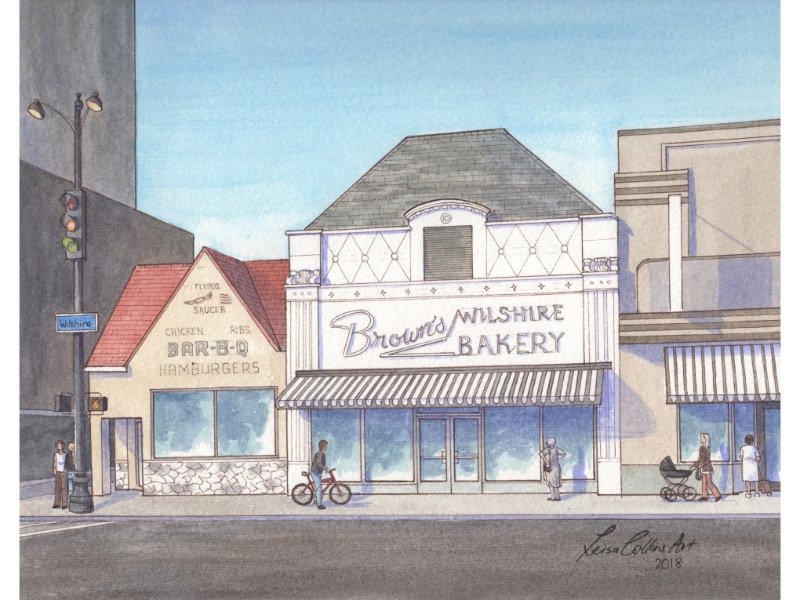
An overview of Los Angeles Architecture
Like nearly all large American cities, name any architectural style and chances are it can be found in Los Angeles. However there are two styles that are most widely identified with the region and consequently many of my Los Angeles home portrait subjects reflect these styles. These are Spanish Mission Revival and Craftsman, as epitomized by the California bungalow. Famous architects include Irving Gill, Frank Lloyd Wright, Richard J. Neutra, and R.M. Schindler. Abundant sunshine, attractive landscape, and a rejection of earlier architectural traditions have invited experimentation and creativity.
Well known examples include the hat-shaped Brown Derby Restaurant and the Tail o’ the Pup hot dog stand resembling a hot dog were among many that drew attention. Up until 1956, Los Angeles enforced a 140-foot building height limit (except for City Hall) and hence the city tended to sprawl outward instead of up. When the ban was lifted, skyscraper construction began with gusto.
The lifting of height restrictions contributed to the construction of modern and contemporary skyscrapers in downtown Los Angeles. These buildings often feature glass facades, sleek designs, and innovative architectural elements. Urban development trends have also emphasized mixed-use projects, combining residential, commercial, and retail spaces within the same complex. In addition, in the 21st century the practice of adaptive reuse has become increasingly common, where historic buildings are repurposed for new uses.
Home Portrait Tour of 20 Los Angeles neighborhoods
This tour will give you a fast glimpse of what you are likely to find if you were to take a drive within the city boundaries of LA. Of course there are beautiful cities that spread outwards the city center, up into San Bernadino Mountains in the east and out to the Pacific coast in the west Cities like Pasadena, Monrovia, Newport and Long Beach. I will be showcasing the house portraits I have created withitn these cities in other blog posts and video slide shows.
Watercolor of Atwater Village Main Street
A few miles north of downtown L.A., my husband and I often visited Atwater Village and even lived there for a while. The painting below depicts the Village’s main street, home to boutique stores, coffee houses, great eateries and other community hubs.
It is situated along the Los Angeles River, adjacent to neighborhoods such as Glendale, Silver Lake, and Los Feliz. The neighborhood is named after Harriet Atwater Paramore, the wife of one of the early residents. Originally it was named “Atwater” and “Village” was added later. Initial residents in the early 1900s included middle-class workers employed at the nearby L.A. Department of Water and Power substation. Over the years, Atwater Village has evolved into a diverse community with a mix of residential, commercial, and industrial areas. Many of their homes were smaller Craftsman and Spanish Revival bungalows.
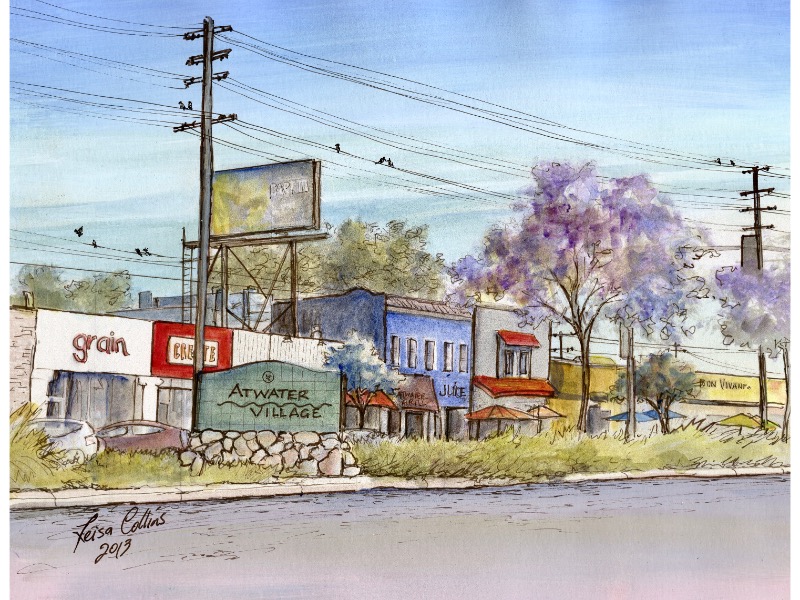
Atwater Village’s Famous Fantasy Bungalows
Close to the Village center is a handful of “fantasy bungalows” built along Brunswick Ave in the 1920s. The homes were influenced by Hollywood’s silent film sets and have exotic designs, brightly colored turrets and arched entryways.
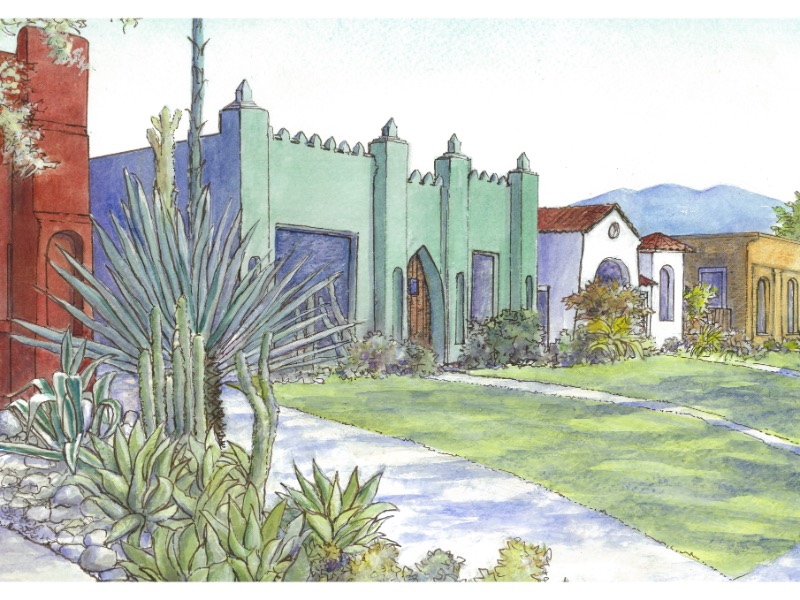
Beverly Hills House Portrait
Beverly Hills was originally a Spanish ranch and lima bean farm owned by Maria Rita Quinteros de Valdez. In the early 20th century, the land was acquired by investors seeking to develop a luxury residential community. The Beverly Hills Hotel, completed in 1912, played a significant role in attracting residents. In the 1920s and 1930s, Beverly Hills became synonymous with luxury and glamour. The iconic Beverly Hills Hotel, Rodeo Drive shopping district, and elegant estates attracted celebrities, wealthy individuals, and those seeking a sophisticated lifestyle. Today, the city boasts a mix of architectural styles, including Spanish Colonial Revival, Mediterranean Revival, and modernist designs. Notable architects such as Wallace Neff and Paul R. Williams contributed to the city’s distinctive architectural character.
In particular, Beverly Hills is home to Monterey Revival style homes (such as the one below.) Thomas O. Larkin was the pioneer of the Monterey Revival style. The architect grew up in Massachusetts, a state known for its classic Colonial homes. As an adult, he moved to California where he observed Spanish and Mexican style architecture. These influences converged when he built a home for his family in Monterey, California in 1935. The Monterey style home portrait below has similar characteristics to the original Larkin House.
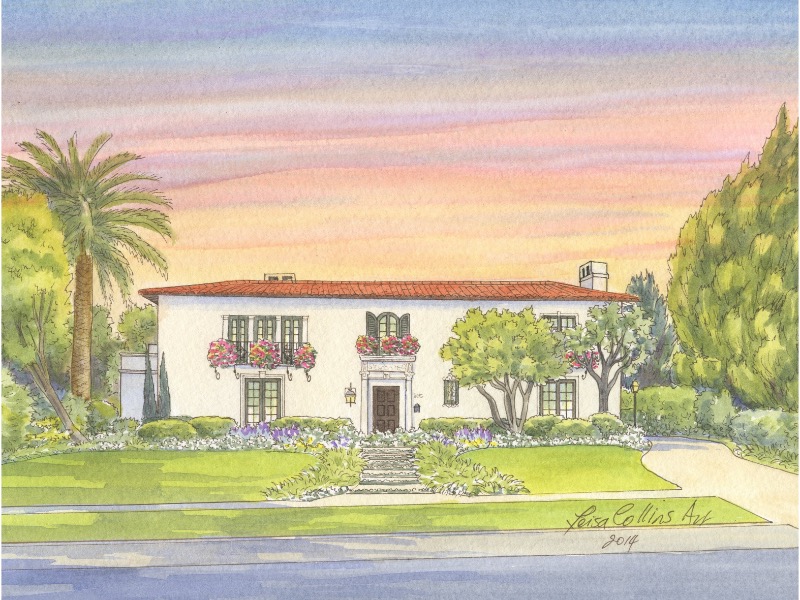
Brentwood House Portrait
Brentwood is a neighborhood located on the west side of Los Angeles. Originally part of the Rancho San Vicente y Santa Monica land grant, in the early 20th century, the area became known as a hub for agriculture, including dairy farming and the cultivation of citrus fruits. Over the decades, Brentwood transformed into a primarily residential neighborhood with a mix of housing types, including single-family homes and apartments. In addition to a thriving residential area, Brentwood is the home to well-know shopping districts and cultural institutions such as the Getty Center. Brentwood features a variety of architectural styles in its housing, including Mediterranean, Spanish, and contemporary designs. Brentwood is known for its upscale residential character, and it has attracted notable residents over the years including Arnold Schwarzenegger, LeBron James, and Tobey Maguire.
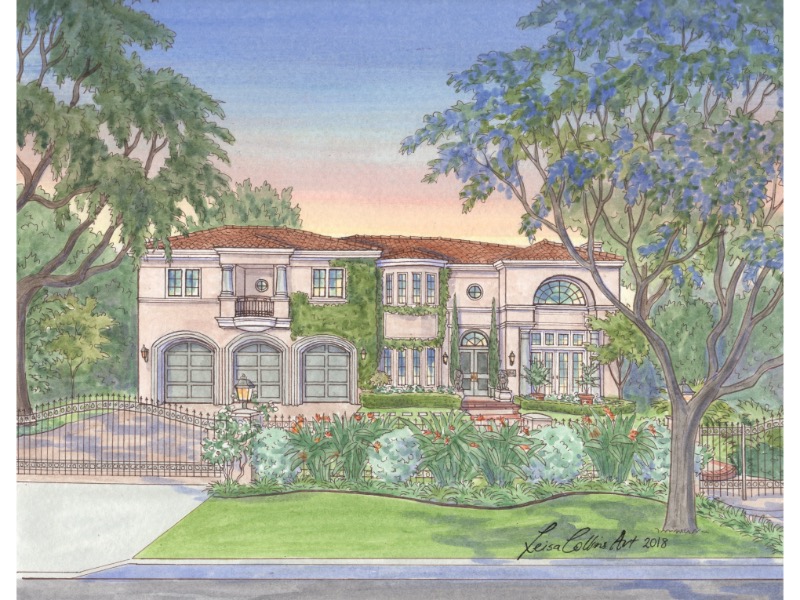
Eagle Rock House Portrait
Eagle Rock is a neighborhood in the northeastern part of Los Angeles, California. The area has a rich history that dates back to the Tongva, an indigenous people that inhabited the area before European settlers. The community began to take shape in the early 20th century, experiencing significant growth during this period with the development of homes, schools, and businesses. It also has long been a cultural and educational hub. Occidental College, a private liberal arts college, was established in the neighborhood in 1887. Today, Eagle Rock is known for its cultural diversity, reflected in its residents, businesses, and community events. The neighborhood features a mix of architectural styles, including Spanish Colonial Revival, Craftsman, Mediterranean, and Mid-Century Modern homes.
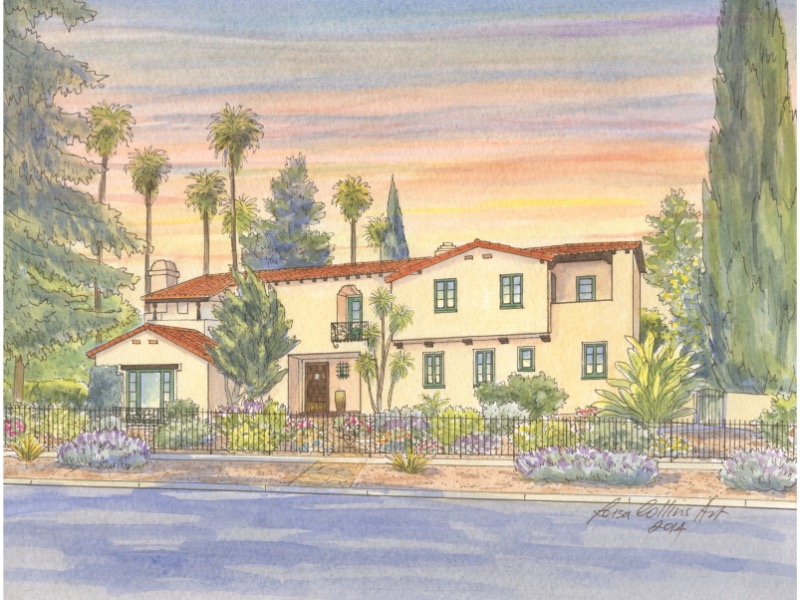
Eastside House Portrait
The term “Eastside” in Los Angeles can refer to different areas depending on the context, but typically and in my case, it is to describe neighborhoods to the east of downtown Los Angeles. As Los Angeles experienced rapid urbanization and population growth in the early 20th century, neighborhoods on the Eastside became established residential areas with diverse populations. Eastside has a rich Mexican and Latino heritage. The region was historically home to Mexican-American communities, this influence is still evident in cultural practices, businesses, and events. Eastside has been a cultural hub, contributing to the artistic and musical landscape of Los Angeles. For example, sub-areas like Boyle Heights have a rich history of cultural diversity and activism. You can find a variety of home styles here, including Craftsman, Spanish Colonial Revival and even the adaptive reuse of some commercial buildings for residential purposes.
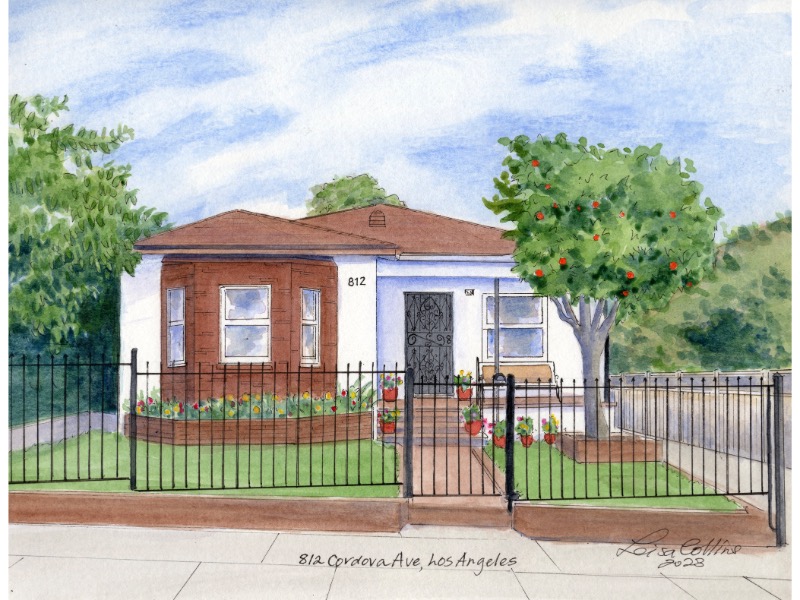
El Sereno House Portrait
El Sereno is a neighborhood located in the eastern part of Los Angeles, California. It is known for its family-friendly atmosphere tucked away from the hustle and bustle of Los Angeles. Like Eagle Rock, it was originally inhabited by the Tongva people, and later the Spanish established missions in the region. With the expansion of streetcar lines in the 20th Century, El Sereno experienced both a residential and commercial development boom. El Sereno is home to California State University, Los Angeles (CSULA), a public university that contributes to the educational landscape of the neighborhood, and to several parks such as Ascot HIlls. El Sereno has a diverse population, including Latino, Asian, and White communities. Like other LA communities, you will find Spanish Colonial Revival, Bungalow, and Mediterranean home styles. In older sections of El Sereno, you will even find some Victorian-style homes.
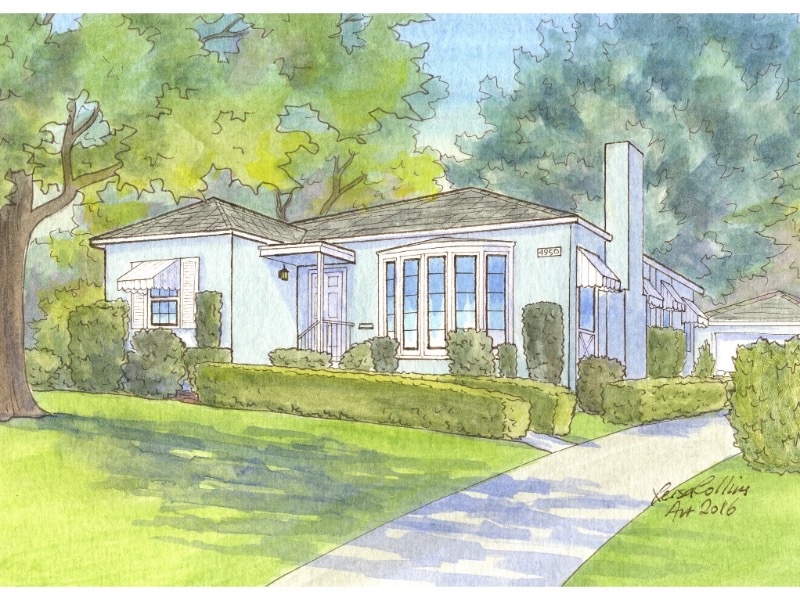
Encino House Portrait – Front and Back
Another neighborhood in LA is Encino. “Encino” is derived from the Spanish word for “oak tree,” reflecting the abundance of oak trees in the area. In the late 19th century, the land that is now Encino was used for agriculture, primarily citrus orchards and wheat fields. The area experienced significant growth in the 20th century, especially after the construction of the Ventura Freeway (U.S. Route 101), which made it more accessible. Today, Encino is considered by some to be one of the best places to live in California. Residents describe an urban feel here and there are well-known commercial districts complete with restaurants, coffee shops and green spaces. The neighborhood is affluent yet diverse, with many entertainment professionals and executives calling it home. You can find many home styles here including Ranch, Spanish Colonial Revival and Mid-Century Modern.
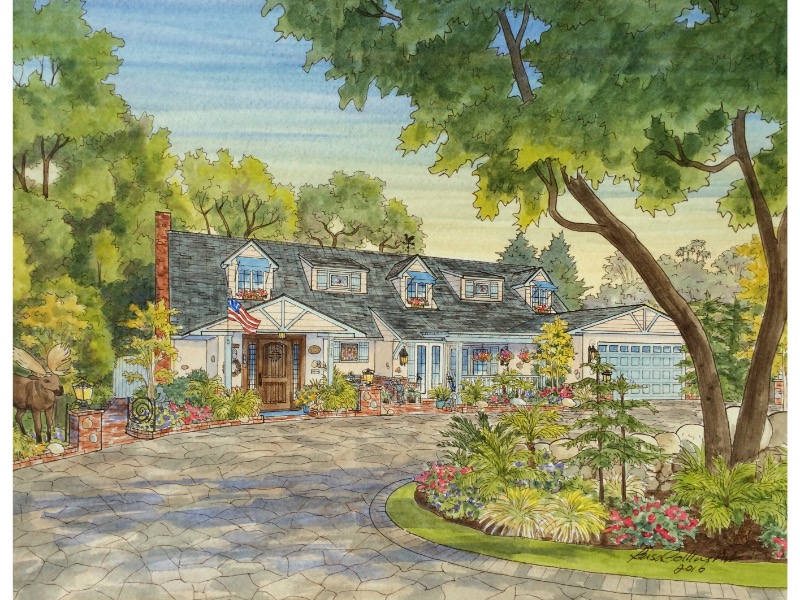
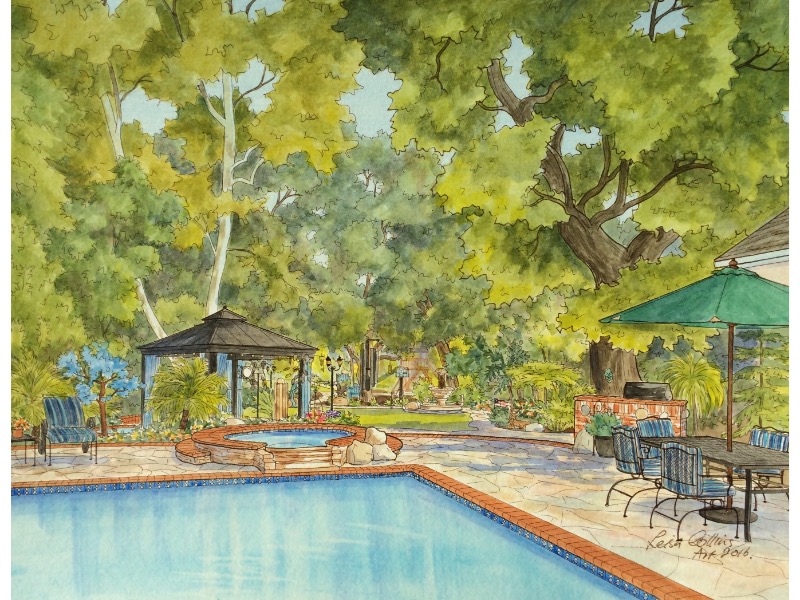
Fairfax House Portrait
Fairfax is a neighborhood of Los Angeles that has a rich history dating back to the early 20th century. The area was originally developed as a residential district, and its growth was boosted by the expansion of the streetcar system in Los Angeles proper. In the 1920s and 1930s, Fairfax experienced a significant influx of Jewish immigrants, and the neighborhood became a center of Jewish culture and commerce. The Fairfax District was often referred to as the “Bagel Belt.” Over the years, Fairfax has evolved into a diverse and culturally rich neighborhood, attracting residents and businesses from various backgrounds. Fairfax is home to several landmarks and attractions such as CBS Studios and The Original Farmer’s Market. This neighborhood has several classic California home styles such as Craftsman, Spanish Colonial Revival and Mid-Century Modern.
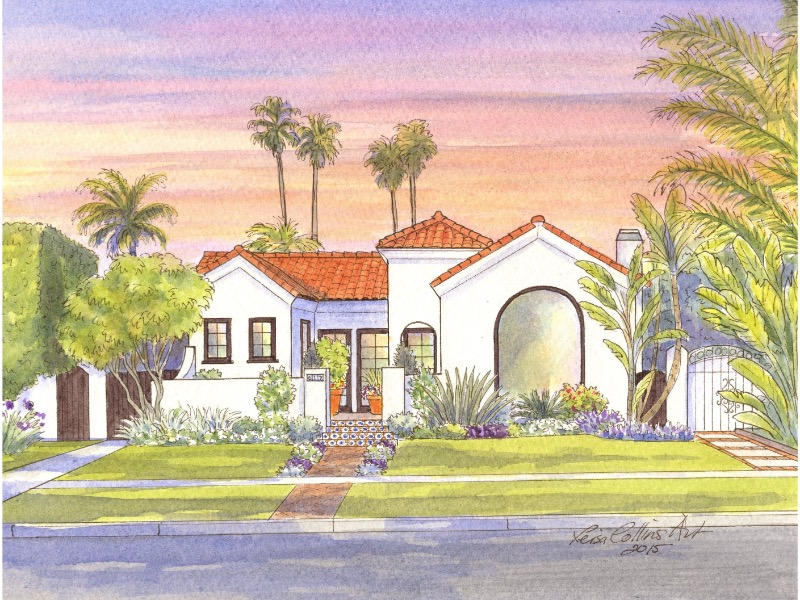
Hancock Park House Portrait
A neighborhood defined by large estates and tree-lined streets, Hancock Park was developed in the 1920s by the Hancock family. The neighborhood was designed to be an upscale residential area. The neighborhood is known for its well-preserved and diverse architectural styles, including Tudor, Mediterranean Revival, Colonial Revival, and Spanish Colonial Revival. Many of the homes were designed by prominent architects of the time. Like many other historic areas of the city, Hancock Park has a collection of beautiful well maintained Craftsman homes as well. Hancock Park is also home to the famous Wilshire Country Club and a popular shopping district called Larchmont Village.

Hollywood Hills West House Portrait
Hollywood Hills West is a neighborhood located in the Hollywood Hills region of Los Angeles, California. It’s known for its scenic hillside location, winding roads and luxurious homes. Its proximity to the entertainment industry have made it a popular and affluent area. Various expositions held on the west coast in the early part of the 20th century helped to popularize the Mid-Century Modern style which soon spread nationwide. Today, the real estate in Hollywood Hills West is diverse and includes a mix of architectural styles. Luxury homes, often with contemporary or modern designs, are prevalent. Many properties feature amenities such as private pools, expansive decks, and large windows to take advantage of the stunning views. Famous landmarks such as the Hollywood Bowl and the iconic Mullholland Drive are located within this neighborhood.
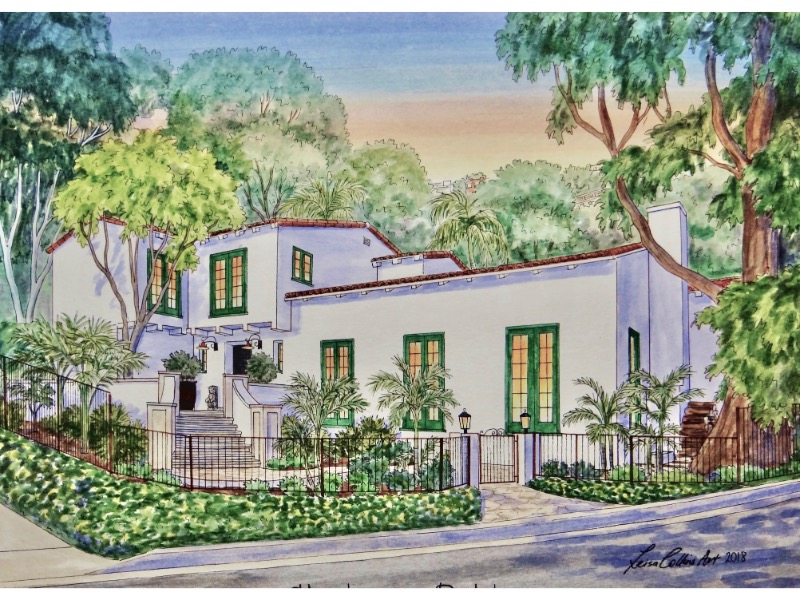
Los Feliz House Portrait
Los Feliz is a historic and culturally diverse neighborhood located in the central part of Los Angeles, California. Its Spanish Colonial origins are evident in its moniker, which means “The Happy Ones”. Major development of Los Feliz began in the early 20th century, when it attracted wealthy residents and Hollywood celebrities seeking a scenic and tranquil environment. Notable individuals, including Walt Disney, built homes in the neighborhood during this time. Because of the influx of show business professionals, Los Feliz became a hub for the cultural and entertainment industry. Many of the homes in Los Feliz were designed by prominent architects, and the neighborhood features a mix of architectural styles, including Mediterranean Revival, Spanish Colonial Revival, and Tudor. Notable points of interest are the Griffith Observatory and Griffith Park.
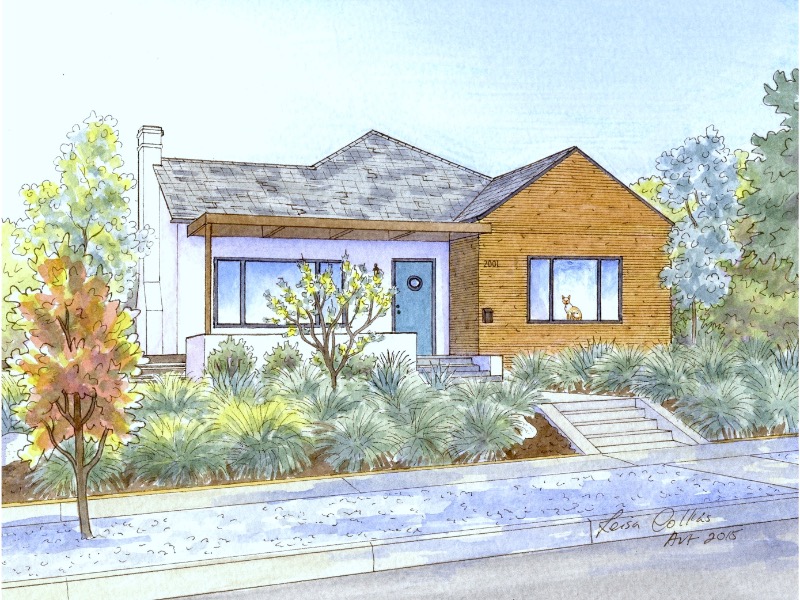
Mid City House Portrait
Aptly titled, The Mid-City neighborhood in Los Angeles, California is a diverse and centrally located area known for its cultural richness and community diversity. The area that would become Mid-City was originally part of the Rancho La Brea land grant, a Mexican land concession granted to Antonio Jose Rocha in 1828. In the late 19th century, as Los Angeles expanded, the region began to see suburban development. Today, it is home to a mix of immigrant communities, including populations with roots in Africa, Latin America, Asia, and other parts of the world. This diversity is reflected in the neighborhood’s businesses, places of worship, and cultural events. Mid-City Los Angeles has a diverse real estate landscape with a mix of architectural styles and housing types such as Mid-Century Modern, Victorian and Bungalow.
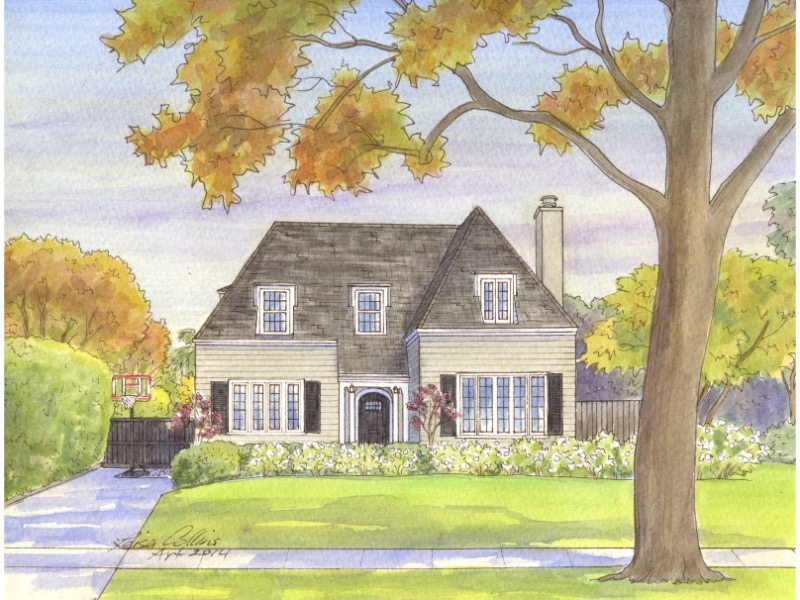
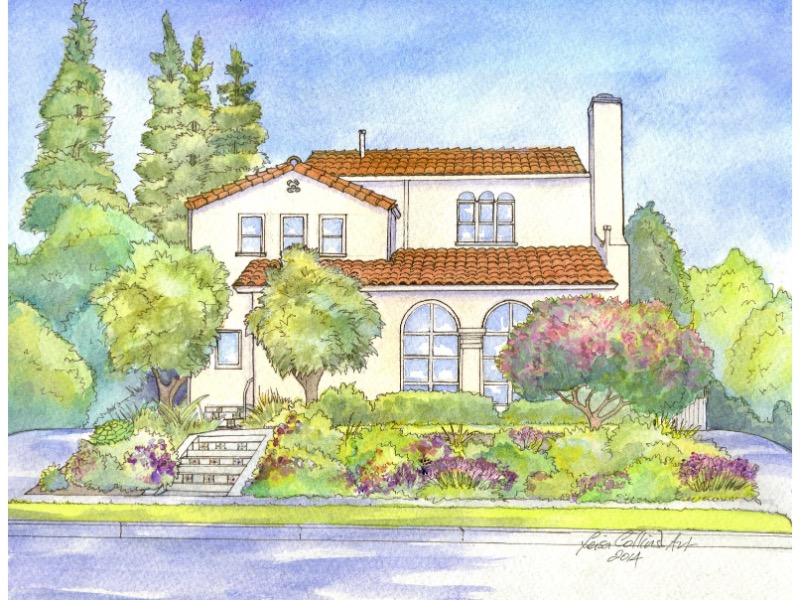
Miracle Mile North House Portrait
The Miracle Mile area gained prominence in the 1920s and 1930s as Los Angeles experienced significant growth and urban development. Developed by A.W. Ross, the Miracle Mile was originally envisioned as a commercial and retail district along Wilshire Boulevard, featuring upscale shops and restaurants. Today, its proximity to cultural institutions such as the LA County Museum of Art and shopping/dining districts, along with its central location, make it a prime area to reside in and attracts a range of residents, including professionals, artists, and those interested in urban living. Miracle Mile features a mix of architectural styles, including Art Deco, Spanish Colonial Revival, and Mid-Century Modern.
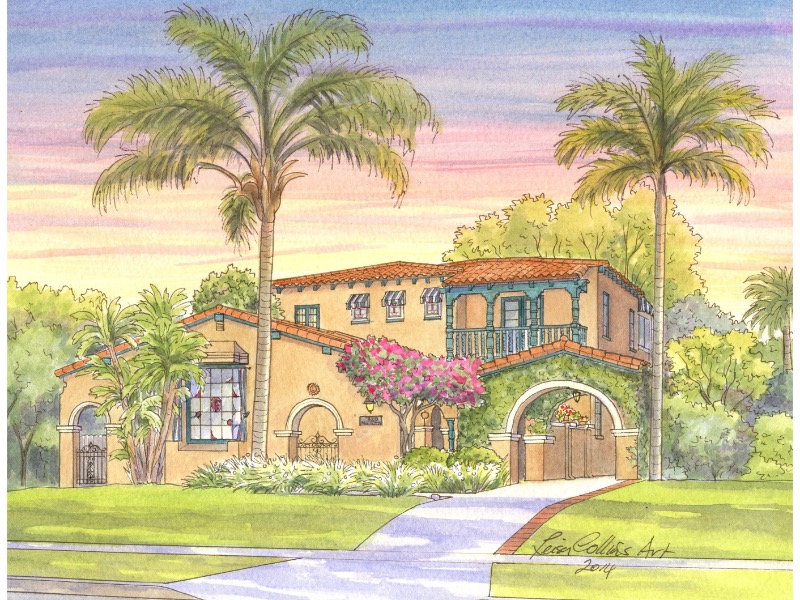
North Hollywood House Portrait
North Hollywood, often referred to as NoHo, is a vibrant neighborhood located in the San Fernando Valley region of Los Angeles, California. North Hollywood was originally established as a separate community known as “Lankershim” in the late 19th century. It was named after a prominent landowner, Isaac Lankershim. It became a part of the city of Los Angeles in 1927. In the mid-20th century, North Hollywood became associated with the entertainment industry. Television studios, soundstages, and production facilities were established in the area. Today, the neighborhood is home to a mix of ethnicities, including Hispanic, Caucasian, Asian, and other communities. NoHo has a burgeoning arts scene replete with theaters, galleries, and creative spaces. Once again, you can find architectural and home styles common in Southern California such as Mediterranean Revival, Mid-Century Modern, Bungalow and Ranch.
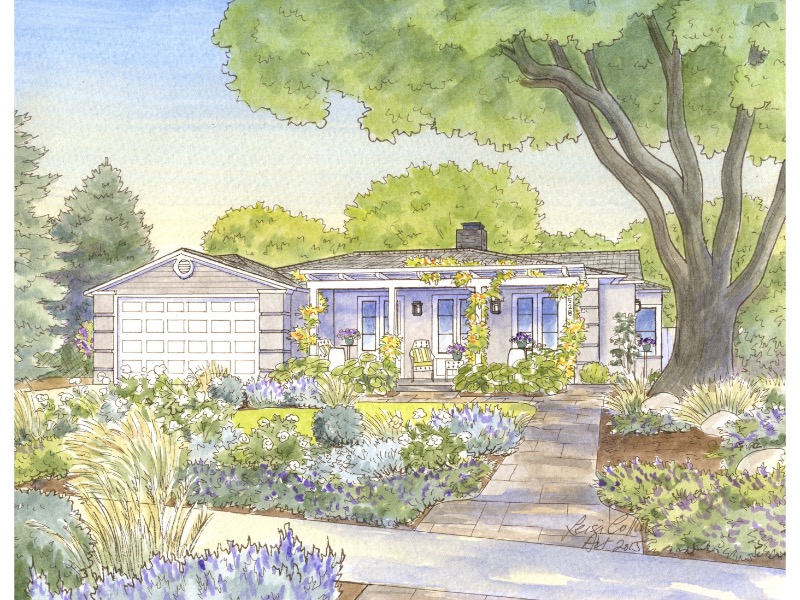
Pico Robertson House Portrait
Pico-Robertson is a neighborhood located in the Westside area of Los Angeles. This neighborhood is often referred to as the “Jewish Beverly Hills” due to its significant Jewish population and its proximity to Beverly Hills. While the Jewish community is a prominent demographic, Pico-Robertson is also a diverse neighborhood with residents from various cultural and religious backgrounds. Pico-Robertson features a mix of housing options, including single-family homes. The residential streets often have a suburban feel with well-maintained properties featuring Spanish Colonial Revival, Traditional and Craftsman home styles. The neighborhood’s central location provides easy access to other parts of Los Angeles, including Beverly Hills and Culver City. It is situated near major roadways, making it convenient for residents to navigate the city.
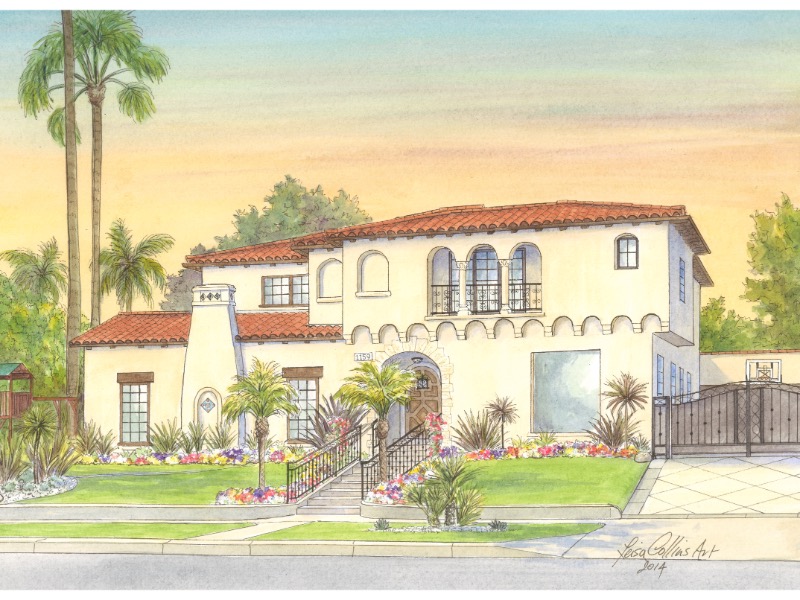
Shadow Hills House and Garden Portraits
Shadow Hills is situated in the foothills of the San Gabriel Mountains, providing residents with views of the surrounding natural landscape. It is relatively close to open spaces and recreational areas, contributing to its semi-rural feel. The area that is now Shadow Hills was initially settled as ranch and agricultural land in the early 20th century. Shadow Hills has maintained an equestrian tradition over the years, and many properties in the neighborhood have ample space for keeping horses. The equestrian-friendly nature of the neighborhood attracts residents with an interest in horse keeping and equestrian activities. Points of interest include the Angeles National Golf Club and the nearby Angeles Forest. Ranch-style homes are common in this neighborhood.
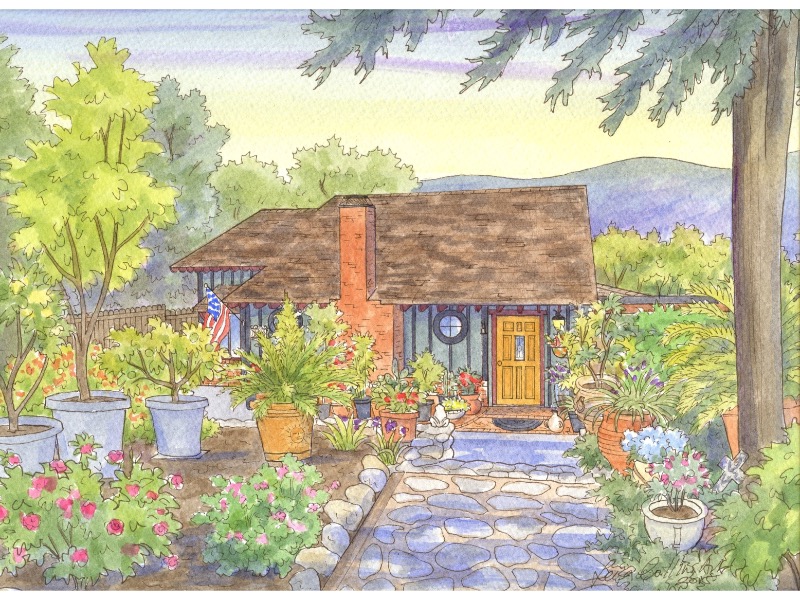
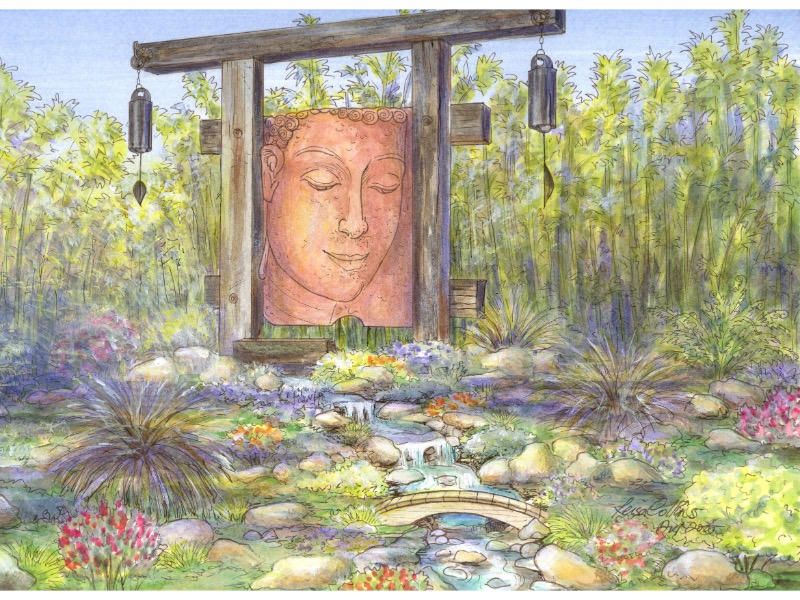
Silver Lake House Portrait
Silver Lake is a vibrant and eclectic neighborhood located in the central region of Los Angeles, California. The neighborhood is named after the Silver Lake Reservoir, a large artificial reservoir that has become a symbol of the area. The reservoir and its walking path offer recreational opportunities and scenic views. Known for its artistic community, diverse population, and iconic reservoir, Silver Lake has become one of the city’s trendiest and most sought-after neighborhoods. In particular, Silver Lake has a long history of attracting artists, musicians, and creative professionals. The neighborhood’s creative spirit is evident in its artsy vibe, independent galleries, and the presence of local musicians. Silver Lake features a mix of architectural styles, including Spanish Colonial Revival, Mediterranean, Mid-Century Modern, and contemporary designs.
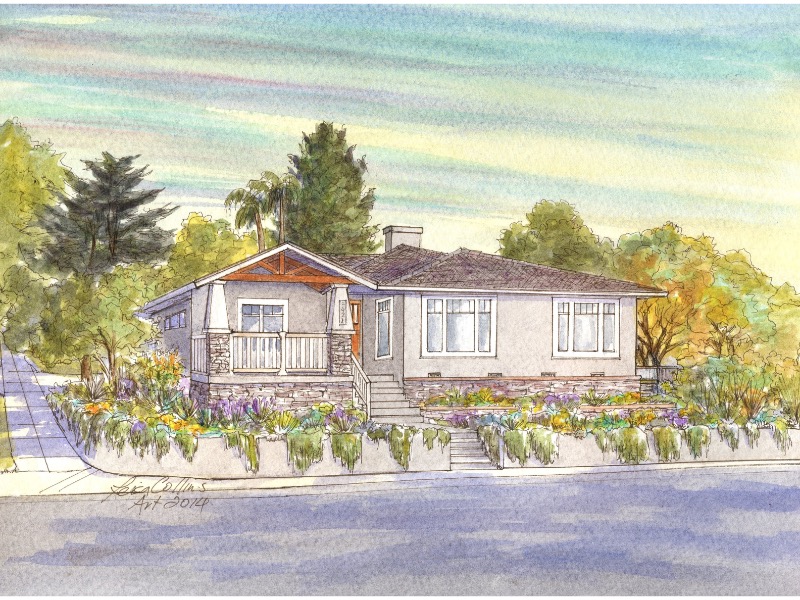
Studio City House Portrait
Studio City is a neighborhood located in the San Fernando Valley region of Los Angeles, California. Known for its association with the entertainment industry, Studio City is a popular and affluent community. Studio City is known for its picturesque and tree-lined residential streets. The neighborhood has a suburban feel with well-maintained homes and landscaping. The architectural styles in Studio City vary, including Mediterranean, Spanish Colonial Revival, Mid-Century Modern, and contemporary home styles. Points of interest include CBS Studio Center, Ventura Boulevard and Fryman Canyon. Given its proximity to the entertainment industry, Studio City has been home to many celebrities over the years.
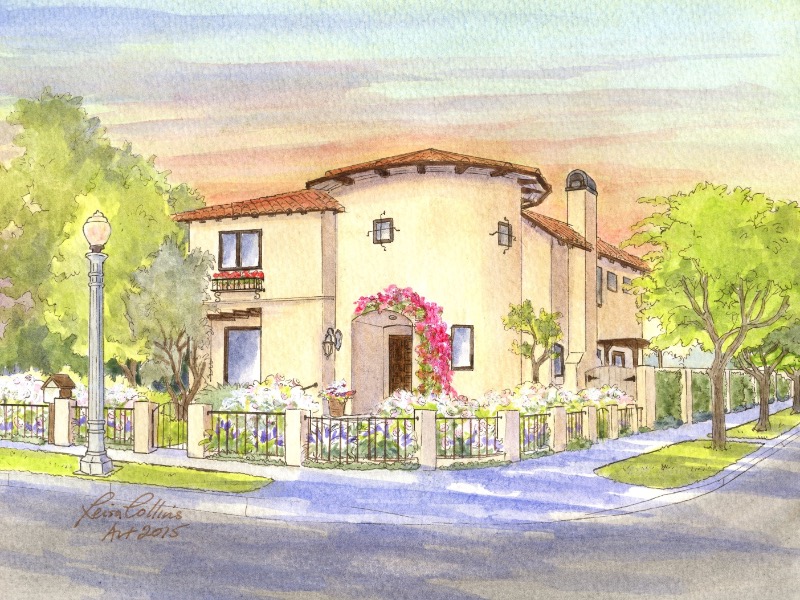
Toluca Lake House Portrait
Toluca Lake is a charming and affluent neighborhood located in the southeastern San Fernando Valley region of Los Angeles. Known for its residential character, beautiful homes, and a sense of community, Toluca Lake is a popular area for both longtime residents and those seeking a tranquil yet convenient lifestyle. Toluca Lake is named after the private natural lake located within the neighborhood. The neighborhood is characterized by tree-lined streets and a mix of architectural styles, including Spanish Colonial Revival, Mediterranean, Tudor, and Mid-Century Modern. Points of interest include Toluca Lake Village and the Toluca Lake Tennis and Fitness Club.
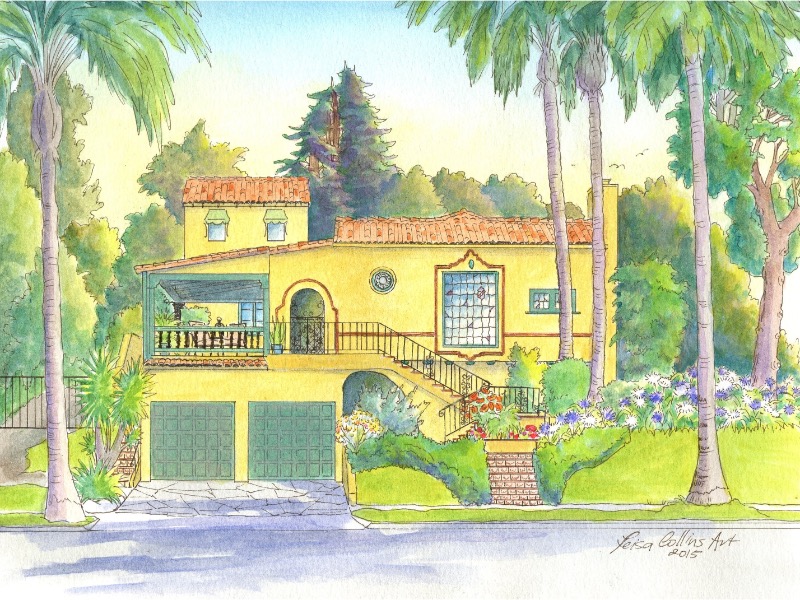
Valley Village House Portrait
Valley Village is another neighborhood located in the San Fernando Valley region of Los Angeles. The area that is now Valley Village was initially developed in the 1930s. After World War II, the San Fernando Valley experienced a significant population boom, and Valley Village saw increased residential development. It was officially designated as a neighborhood in 1991 when it was created by the merging of several smaller communities, including Magnolia Woods, Valley Village, and portions of North Hollywood. Today, Valley Village is known for being family-friendly, with schools, parks, and community events that cater to residents of all ages. It is also easily accessible via highway, making it an ideal location for commuters. The architectural styles in Valley Village vary, with a blend of traditional and more modern designs. Single-family homes may include styles such as Spanish Colonial Revival, Spanish Mission Revival, Mid-Century Modern, and contemporary architecture.

Westwood House Portrait
Westwood is a neighborhood located on the west side of Los Angeles adjacent to the University of California, Los Angeles (UCLA). Westwood’s development began in the 1920s when it was envisioned as a well-planned residential and commercial district. The Janss Investment Company, which owned the land, played a significant role in the area’s early development. UCLA’s establishment in Westwood in 1929 furthered this development. With UCLA situated within its boundaries, Westwood has a substantial student population. This demographic contributes to the neighborhood’s energy and cultural richness. It is home to cultural institutions like the Hammer Museum, which is affiliated with UCLA, and the Geffen Playhouse. The housing stock varies in architectural styles, ranging from Mediterranean to modern designs.
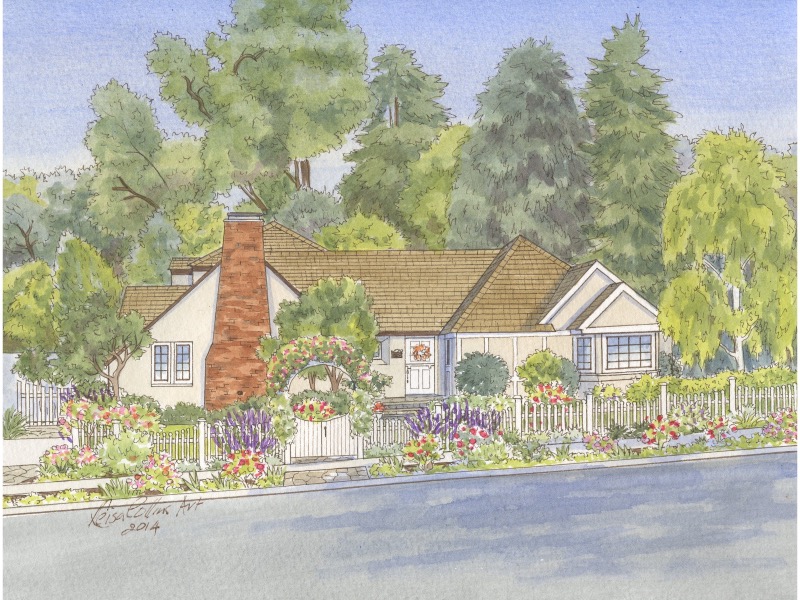
Wilshire House Portrait
Wilshire Boulevard runs approximately 15 miles from Downtown Los Angeles in the east to the Pacific Ocean in the west. It passes through several neighborhoods and commercial districts. It is home to numerous cultural institutions, museums, and landmarks. This includes the Los Angeles County Museum of Art (LACMA), the La Brea Tar Pits, and the Petersen Automotive Museum. Notably, the eastern section of Wilshire Boulevard passes through Koreatown, a vibrant and densely populated neighborhood known for its diverse community, restaurants, and nightlife. Wilshire Boulevard also passes through Westwood, Beverly Hills and Miracle Mile.
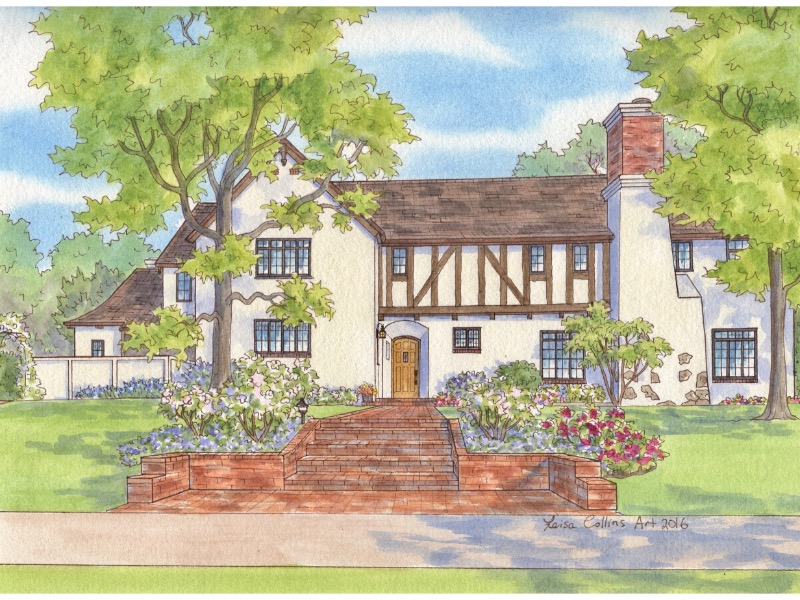
Windsor Square House Portrait
Windsor Square is an affluent residential neighborhood located within the Hancock Park area of Los Angeles. Windsor Square, developed in the early 20th century, is part of the historic Hancock Park area. The neighborhood was originally designed as an upscale residential community, and its development reflects the city’s growth during the early decades of the 1900s. The architectural character of Windsor Square is one of its defining features. The neighborhood boasts a mix of architectural styles, with many homes designed in the early 20th-century styles, including Mediterranean Revival, Spanish Colonial Revival, Tudor Revival and Colonial Revival. The storied Wilshire Boulevard passes through this area. Today, Windsor Square continues to be a desirable and prestigious residential enclave within Los Angeles, known for its historic homes, upscale atmosphere, and community engagement. The preservation of its architectural heritage remains a priority for residents and local organizations
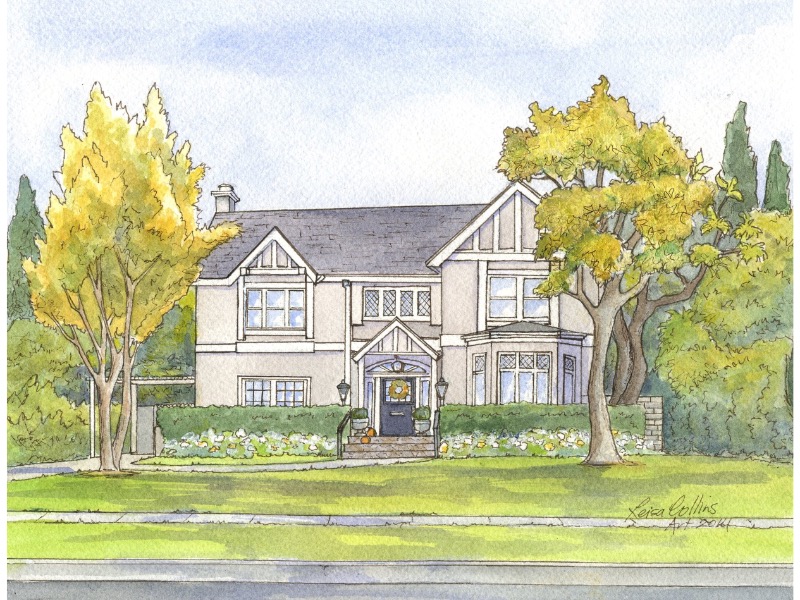
Woodland Hills House Portrait
Woodland Hills is a neighborhood located in the southwestern part of the San Fernando Valley in Los Angeles. In the early 20th century, the San Fernando Valley underwent agricultural development, and Woodland Hills was no exception. Orchards, farms, and ranches were common in the area. Subsequently, as Los Angeles experienced population growth, areas like Woodland Hills transitioned from agricultural to suburban residential developments. The name “Woodland Hills” was coined in the 1920s by a local real estate developer, Victor Girard Kleinberger. The name reflected the wooded and hilly terrain of the area. The 101 highway connected this neighborhood with LA proper, which further catalyzed residential development. Today, Woodland Hills is a well-established suburban neighborhood with a diverse population, a mix of residential and commercial areas, and a reputation for offering a comfortable and family-friendly lifestyle. Colonial Revival, Tudor and Split-level home styles are common to this neighborhood.
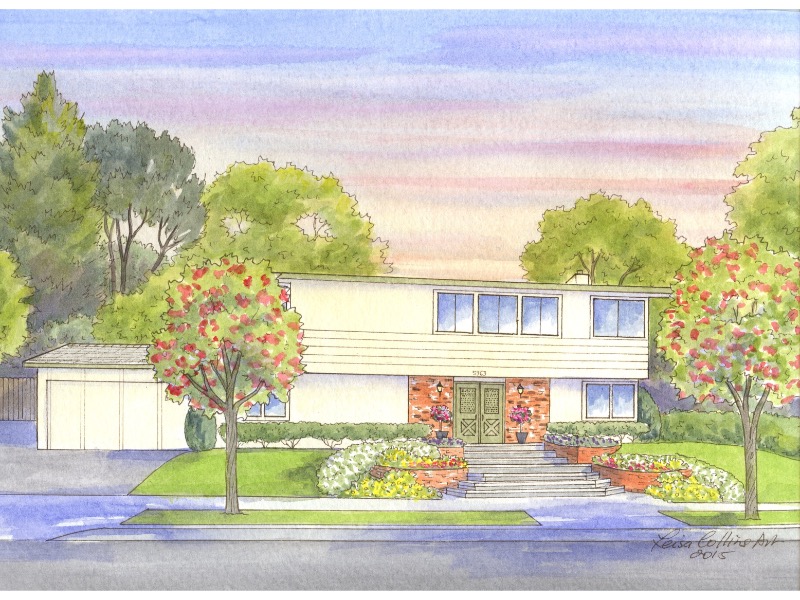
History of the City of Los Angeles
In order to put things in perspective, always like to round things off with some history about an area I have created a series of house portraits of.
As you may have gathered from previous neighborhood descriptions, Los Angeles was originally inhabited by indigenous tribes such as the Tongva, Chumash and Serrano. It expanded with settlers from Spain and Mexico through Spanish colonization and then through New American gold prospectors, land speculators, laborers, oil barons and then those seeking fame in Hollywood in the early 20th century.
From its origin as an outpost, it grew larger in 1781 when a group of 44 settlers of European, African and Native American backgrounds traveled from northern Mexico to establish a farming village on the banks of the Rio Porciúncula. Under Spanish rule, the Spanish governor named the settlement El Pueblo de Nuestra Señora la Reina de los Ángeles de Porciúncula, or “The Town of Our Lady the Queen of the Angels of Porciúncula.”
Spanish missions were soon established in the area, including Mission San Fernando, named for Ferdinand III of Spain, and Mission San Gabriel Arcángel, founded by Junipero Serra. In 1821, Mexico declared its independence from Spain, and all of California fell under Mexican control.
The Mexican American War broke out in 1846, and two years later California was annexed by the United States. Timing was everything in this case, as rich deposits of gold were discovered in the Sacramento Valley in 1848, igniting the Gold Rush. Additionally, the hordes of ‘49ers flocking to California depended on beef and other foods from ranches and farms in the Los Angeles area.
In 1881, Southern Pacific Railroad completed a track into Los Angeles, linking the city with the rest of the United States. This caused a flurry of land speculation, and winter-weary Easterners were soon being tempted with promises of lush orange groves and endless sunshine.
Around the turn of the 20th century, the discovery of oil in the region led to the establishment of oil fields and the growth of the petroleum industry. This contributed significantly to the city’s economic prosperity.
Los Angeles saw the establishment of cultural and educational institutions in the early 20th century. The University of Southern California (USC) was founded in 1880, and the Los Angeles County Museum of Art (LACMA) opened its doors in 1910.
The entertainment industry, particularly the film industry, also played a pivotal role in shaping Los Angeles and the first motion picture studio, Nestor Studios, was established in Hollywood in 1911. This laid the foundation for the area’s association with the entertainment industry.
Important developments in infrastructure also helped. The construction of the Los Angeles Aqueduct, completed in 1913, allowed the city to access water from the Owens Valley, facilitating further population growth and urban development.
Los Angeles played a crucial role in wartime production during WW II, and the region saw an influx of defense industry jobs. The postwar period witnessed a population boom, suburbanization, and the development of the aerospace and entertainment industries.
In more recent decades, Los Angeles was faced with urban challenges, including issues related to air pollution, traffic congestion, and social inequality. However, the city continued to attract a diverse population and became known for its cultural vibrancy and international influence.
The late 20th century and the 21st century has seen the rise of the technology and creative industries in Los Angeles. Silicon Beach, the area’s tech hub, emerged, and the city continued to be a global center for film, television, and music production.
That sums up this article about my Los Angeles house portrait series. Through my pen and watercolor home paintings, I hope you have enjoyed this little tour showing the vibrancy and eclectic nature of homes in this great sprawling south western city.
Cia for now,
Leisa

